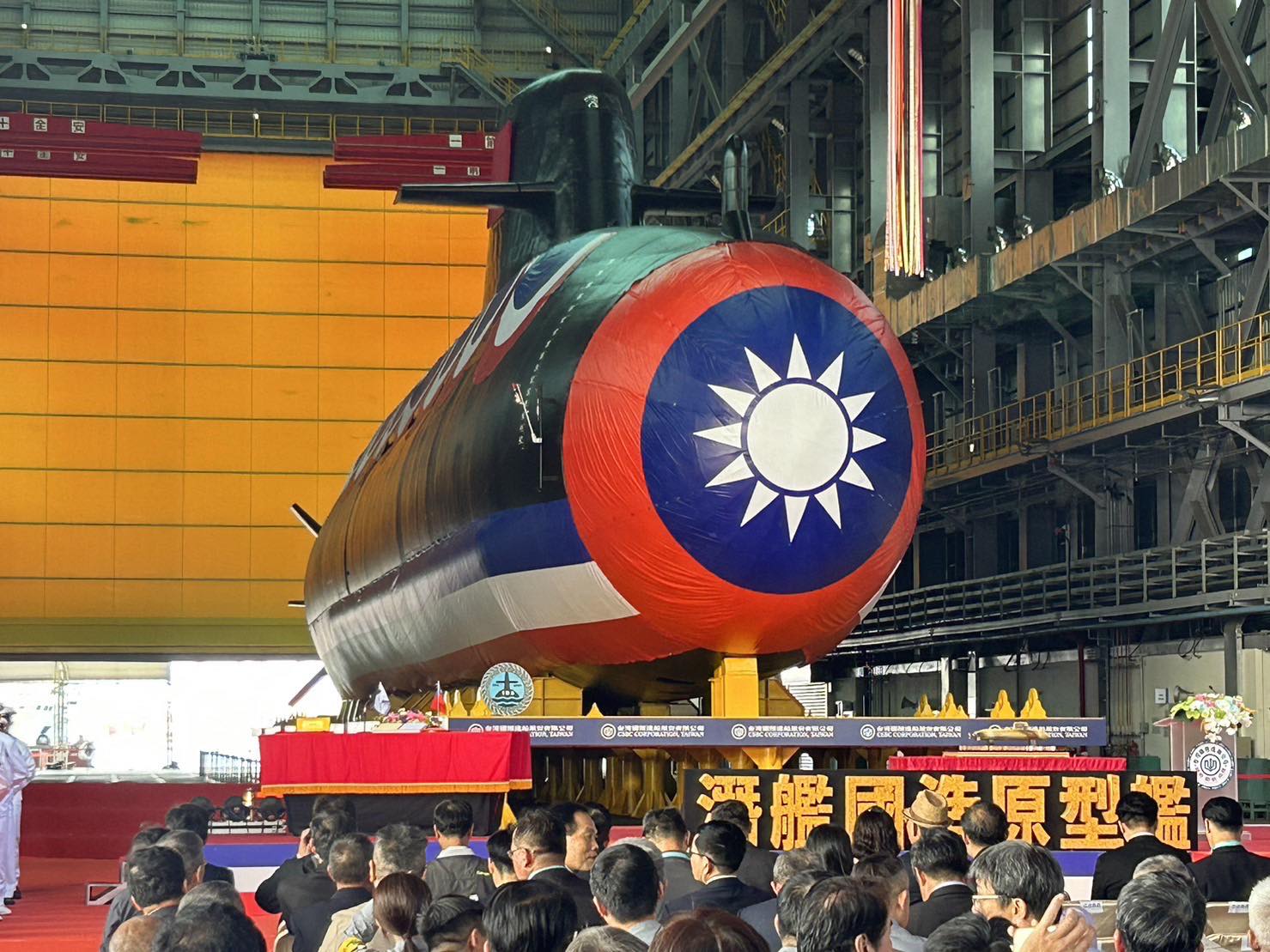Tragedy struck the crew of a Taiwanese submarine last week when three navy officers were swept off a submarine near Kaohsiung City, Taiwan. Now, the cause of the accident has been confirmed to be unexpected waves, and the highest authorities have issued a detailed version of the accident.
Taiwan’s Navy revealed on December 26 that sudden waves are most likely to blame for the incident that occurred on December 21 and left three members of the submarine crew missing. The Navy also provided a timeline of the events that transpired, as per a Taiwan News report.
While the Navy first thought last week that the missing crew members were washed off the deck of their submarine by rogue waves, Vice Admiral Wu Li-ping (吳立平), Chief of Naval Staff, gave more information at a press conference recently.
The incident happened on board the Hai Hu, also known as the Sea Tiger, submarine, which is one of the only two submarines in the Taiwanese Navy. The vessel was on a training mission that was scheduled to end in the waters near southeast Taiwan on December 29.
The crew of Hai Hu detected “abnormal sounds” coming from the back of the submarine at about midday on December 21, when it was submerged in the ocean.
Eventually, they determined that the sounds were coming from a rescue buoy. For reasons the Navy is still investigating, the wooden cover of the submarine’s compartment slipped off, leaving the buoy floating outside the craft.
Three crew members from ROCS Hai Hu submarine remain missing after being washed overboard. The ROC Navy, Air Force, Coast Guard Administration, and National Airborne Service Corps are searching for the missing sailors. pic.twitter.com/JplJmGIsrW
— 陳彥翰 Chen Yen-Han 🌻 (@Chen_YenHan) December 22, 2023
The captain of the submarine chose to raise the submarine to the surface and have crew members go to the ship’s deck to retrieve the buoy. He feared that the 300-meter steel line the buoy was linked to and dragging to the surface could harm the submarine’s propeller blades.
To keep them from going overboard, the first four crew members were sent out wearing life jackets and fastened to the deck with a safety harness. However, a violent rogue wave carried three of them overboard; just one of them survived because his harness was functioning.
Wu further told the media that two other people vanished when the buckles holding their harnesses to the rope became free due to weather-related deformation. The chief of the ship’s weapons system personally rushed to the submarine deck to save the crew members who had fallen overboard. Later, according to Wu, he fell into the water but was soon rescued.
Subsequently, the captain dispatched an additional six crew members to the deck to rescue the crew members who had vanished during the attempt to recover the buoy. These crew members were designated to the sub’s rescue squad in case of an emergency.
After the accident, Wu announced that the military had sent out 80 aircraft and 76 vessels with 981 personnel on search and rescue efforts, but the master chief petty officer Lin and the two petty officers Yen and Chang remained missing.
According to Wu, preliminary reports suggest that the weather on December 21—specifically, winds with a Beaufort Scale of five—was safe. The accident was most likely caused by an unanticipated surge in the sea.
“We won’t leave our comrades behind,” he vowed, adding that the military would not abandon the search and rescue operation until the missing crew members were located. Previously, the Navy announced that it would search for at least an additional 72 hours after the first 72 hours.
As training has intensified, Taipei, which is preparing for increasing military challenges from neighboring China, has reported annual mishaps among its armed forces. It was the second incident of that kind on a submarine of the Hai Lung class in 14 years.

Another vessel in her class, the ROCS Hai Lung, the sister submarine of the Hai Hu, lost its captain in 2009 when a 30-foot wave carried him off the sail. It took two days to find his body. “His body was intact, which helped to identify him,” Navy Command Headquarters Spokesman Sun Yi-cheng said at the time.
The spokesperson assured the Navy would reassess its standard operating procedures (SOPs) to avert similar tragedies. The accident has taught the Navy a hard lesson, and they will enhance safety protocols, Sun stated.
According to Sun, all naval personnel stationed on battleship decks or elevated observation towers on submarines will have to wear life jackets and safety lines that are attached to the vessel’s hull at all times. It is unfortunate, then, that the life jackets could not save the lives of personnel in the latest accident.
Taiwanese Aging Navy Does Not Have Enough Submarines
The Hai Hu is one of only two Hai Lung-class submarines in Taiwan’s fleet. Constructed in the 1980s by a Dutch contractor, the aging submarines were modeled after the Zwaardvis class of vessels the Royal Netherlands Navy used. In September 1981, the Republic of China (Taiwan) ordered two submarines.
Dock and yard business Wilton Fijenoord b.v Schiedam put down the keels for both submarines in December 1982. Although the builder’s financial problems caused a delay in the submarines’ initial construction, work on the projects was resumed in 1983.
The goal of the Hai Lung-class submarines is to give Taiwan the ability to thwart Chinese naval blockades and maintain open sea lanes, safeguarding the island’s vital trade. Both submarines may also be deployed to block ports in China; however, it’s unlikely they could defeat China’s submarine fleet.
Since the threat of a Chinese invasion looms large, Taiwan started building its indigenous submarines. There’s a reason for this: Beijing has cut off the tiny nation of barely 23 million people’s access to the global submarine market, so it had to construct its submarines instead of buying them from more seasoned sub-producing nations.
In late 2021, Taiwan celebrated the keel-laying ceremony of its first indigenously built submarine, the first in a projected fleet of eight. The country’s security against invasion from mainland China will be strengthened by the Indigenous Security Submarines (IDS), which will enable it to patrol the Taiwan Strait and sink any amphibious transport ships that venture there.

Earlier this year, Taiwan’s attempt to replace antiquated naval capabilities reached a major milestone with the launch of its first submarine that was constructed domestically. The diesel-electric attack submarine, named Hai Kun after a legendary sea creature from Chinese folklore, was launched on Sept. 28 at the CSBC Shipyard in Kaohsiung.
Taiwan’s defense officials are hoping that the submarines will make it much more difficult for China, which has been threatening the island nation with more bellicose threats in recent years, to launch an invasion.
By 2025, Taiwan will have three submarines in total with the addition of “Narwhal.” Although China has dismissed the development of a submarine indigenously as no threat, the Taiwanese military is betting big on its naval modernization and its planned subs
- Contact the author at sakshi.tiwari9555 (at) gmail.com
- Follow EurAsian Times on Google News




